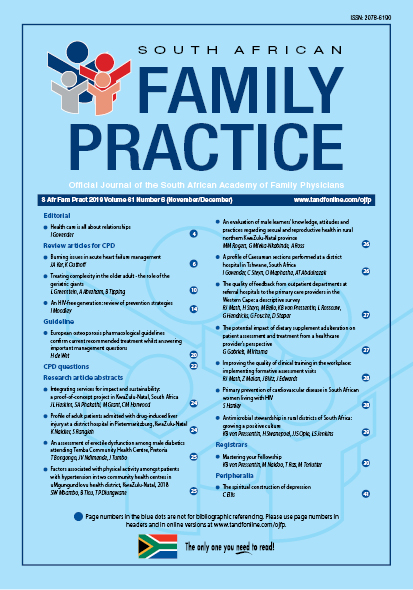An HIV-free generation: review of prevention strategies
Abstract
Globally South Africa has the largest HIV epidemic, with an estimated 7.7 million people living with HIV (PLHIV). The burden of HIV in South Africa varies by age, gender and key population groups. Prevalence is highest among adults between the ages of 15 and 49 years and is higher among females than males. The prevalence rate also varies by province with the highest rates observed in KwaZulu-Natal, Free State, Eastern Cape, Mpumalanga and Northwest.
While greater access to anti-retroviral treatment (ART) has significantly reduced the number of deaths and new infections, the number of new infections is still relatively high, highlighting the need for prevention.
Initial prevention strategies focus on behavioural change through increased education and awareness to ensure safer sex, mainly through peer education, condom distribution and voluntary medical circumcision (VMMC), all of which are in place with varying degrees of success. More recently newer approaches are being considered such as pre-exposure prophylaxis (PrEP) and treatment as prevention (TasP). The major challenge is still behavioural change.
This review sets out to critically evaluate the current and newer approaches. Studies suggest that to achieve greater impact, rather than targeting the general population, prevention strategies should focus on vulnerable populations and in provinces with the highest HIV burden.

